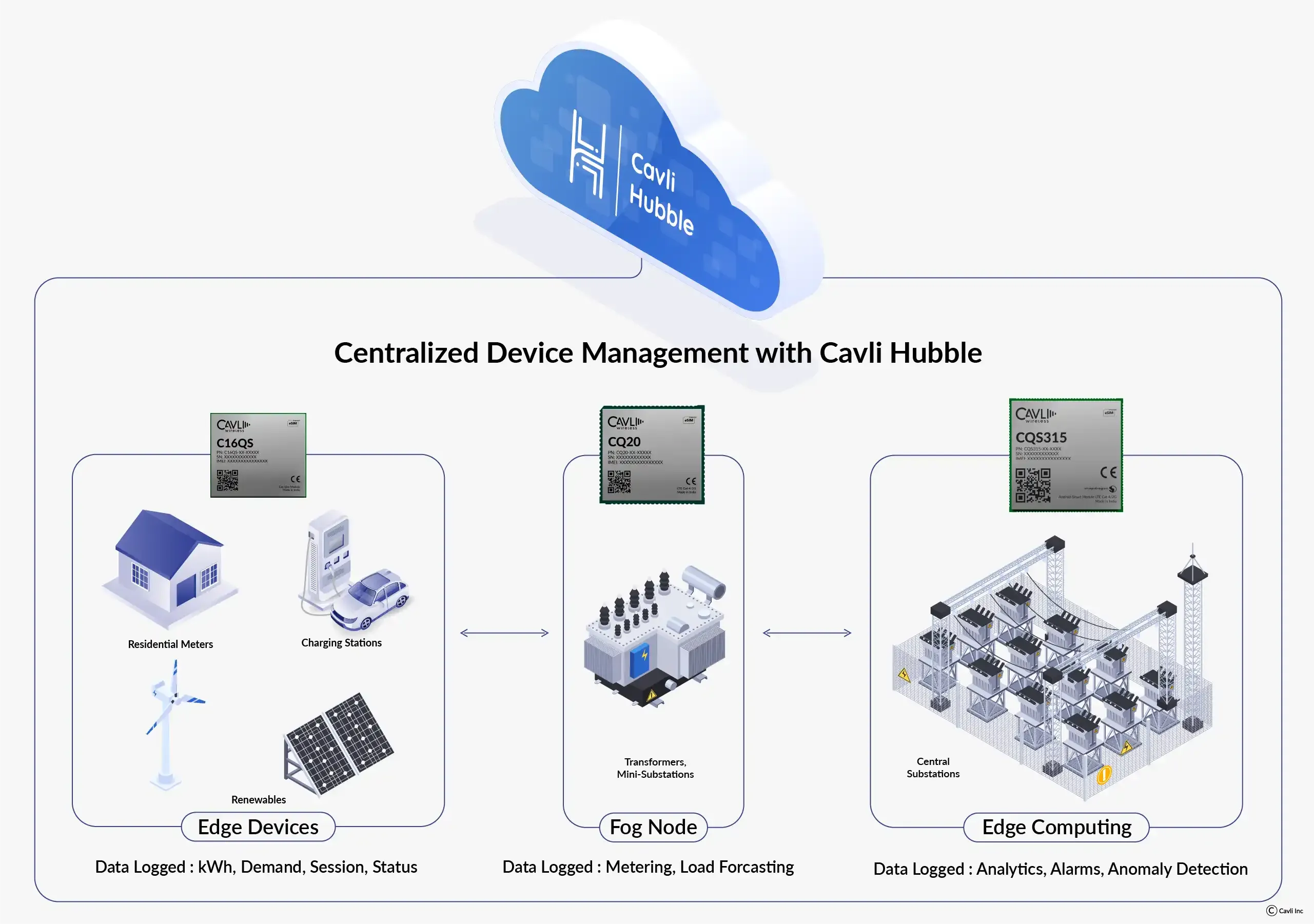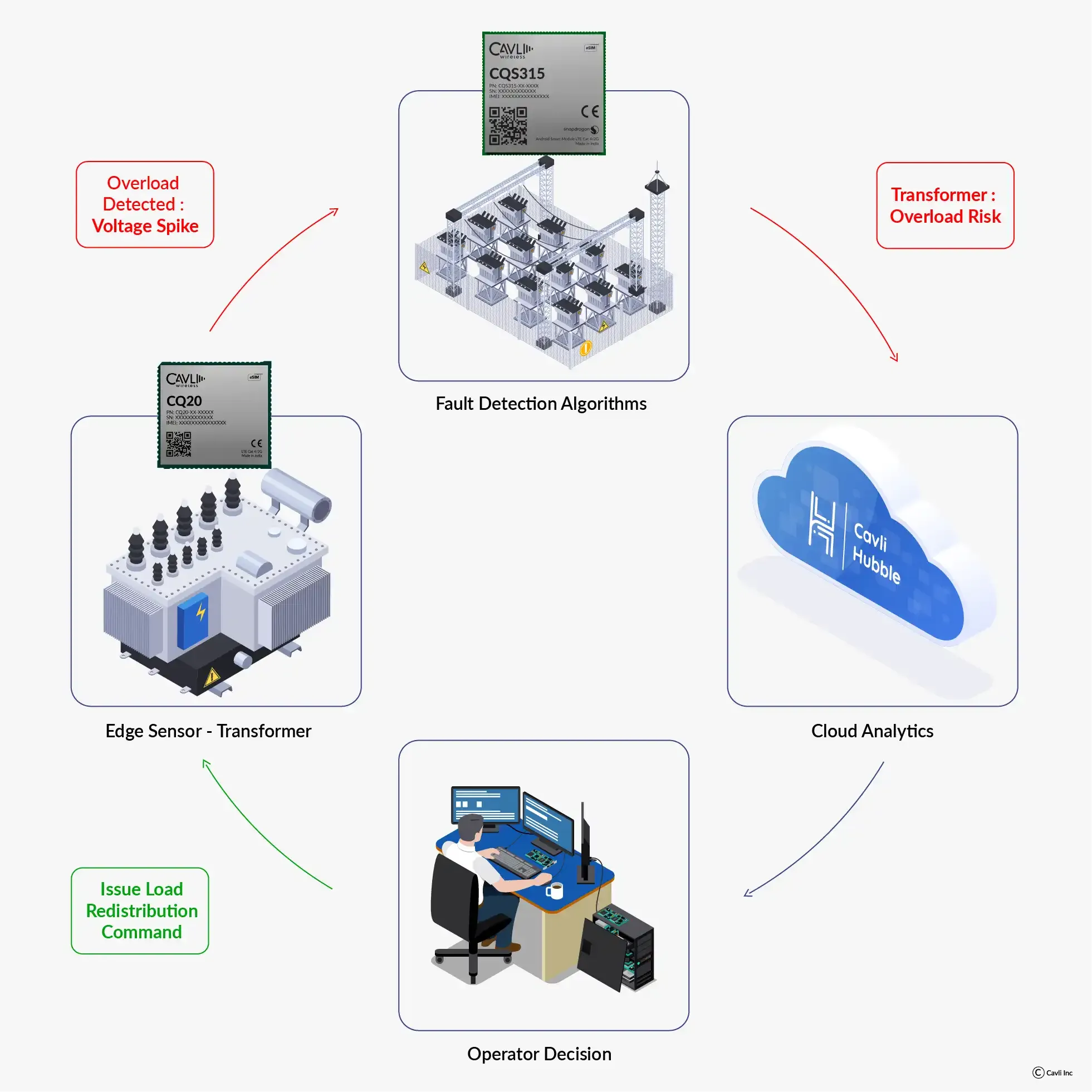Introduction to Connected Intelligence for Smart Grids
As the global energy landscape undergoes rapid transformation driven by electrification and the integration of renewable energy sources, the complexity of electric distribution grids is increasing at an exponential pace. To navigate this evolving terrain, distribution utilities are increasingly dependent on high-fidelity, real-time data and advanced grid simulations. However, executing these simulations effectively requires access to accurate, comprehensive, and up-to-date grid models, something that legacy systems often struggle to provide at scale.
At the heart of this challenge lies the need for intelligent, enterprise-grade data management solutions that can efficiently organize, share, and synchronize grid model data across all layers of utility operations. From planning and protection to monitoring and optimization, the future of smart grid management depends on the ability to coordinate diverse data sources and systems into a unified digital ecosystem.
Smart Grid Modernization: Data-Driven Solutions for Advanced Grid Management
Modernizing a power grid is not about tearing down what already works. Utilities have invested decades and significant capital into SCADA networks, advanced metering infrastructure, substation automation systems, and distributed energy resources. Many of these systems are robust, field-proven, and designed to operate for decades. The challenge lies in bringing them into the era of intelligent connectivity and data-driven decision-making without replacing equipment that still performs its primary function.
Cavli’s LTE-enabled smart modules, including the C16QS, C20QM, and CQS315, along with the Cavli Hubble IoT Connectivity & Modem Management Platform, are designed for seamless integration into existing grid architectures. These solutions can retrofit legacy fault indicators with modern LTE connectivity, upgrade substation gateways for local analytics, or augment renewable energy controllers with AI-driven forecasting. Each module adds advanced functionality while maintaining compatibility with the systems already in place, allowing utilities to evolve their operations in manageable steps rather than through disruptive overhauls.

Layer 1: Field Data Collection with Cavli C16QS
The field layer of the grid is where operational data originates. This includes smart meters that record consumption patterns, phasor measurement units that track grid stability in real time, and line sensors that detect faults. Many of these devices are equipped with communication modules, but in older deployments, those modules are often based on 2G or 3G technology that is being phased out.
The Cavli C16QS LTE Cat 1bis module can be seamlessly integrated into existing devices as a direct replacement for obsolete communication boards. It connects via UART, USB, SPI, or I2C interfaces, matching the hardware integration points of most field devices without requiring a redesign of the main control board. The C16QS is compatible with widely used industrial communication standards such as Modbus RTU and DNP3 with the support of an external MCU, allowing it to slot in easily with existing data acquisition workflows. For devices that require geolocation, such as mobile substations or temporary monitoring units, the module includes GNSS capability. Its embedded eSIM enables remote provisioning across regional deployments, which is particularly useful for utilities operating across different carrier regions.
Layer 2: Substation and Gateway Aggregation with Cavli C20QM
Once data has been collected from the field, it must be aggregated and relayed to SCADA masters or utility data centers. Substations and network gateways are often where different generations of technology converge. A single substation may contain decades-old RTUs that communicate over legacy communication interfaces such as RS-232 or RS-485 alongside modern Ethernet-enabled intelligent electronic devices.
The Cavli C20QM LTE Cat 4 module with 2G fallback integrates directly into these aggregation devices to provide robust cellular backhaul and local processing power. It can communicate with both serial and Ethernet-connected devices, collecting data from legacy and modern equipment simultaneously. The C20QM is powered by a Qualcomm Cortex-A7 CPU with substantial memory, which allows it to run fog computing tasks such as data filtering, compression, and threshold-based automations.
Layer 3: Advanced Edge Computing with Cavli CQS315
Distributed energy resources such as solar farms, wind turbines, and battery energy storage systems are placing new demands on grid control systems. Existing controllers are capable of managing basic operations but may lack the processing capacity for advanced analytics, forecasting, or real-time optimization. The Cavli CQS315 smart module is designed to close this gap by adding significant computational power at the edge.
The CQS315 combines LTE Cat 4 connectivity with a Qualcomm Kryo 260 octa-core CPU and an Adreno 610 GPU. It supports both Linux and Android operating systems, enabling containerized application deployment and the use of machine learning frameworks like TensorFlow Lite or ONNX. This enables predictive analytics, adaptive control algorithms, and GPU-accelerated waveform analysis to be executed locally, reducing the need to transmit large volumes of raw data to the cloud.
Layer 4: Centralized Device Management with Cavli Hubble
When C16QS, C20QM, and CQS315 modules are deployed across a utility network, there must be a way to manage them at scale. The Cavli Hubble IoT platform provides centralized lifecycle management for both Cavli-enabled and compatible third-party devices. Hubble allows operators to provision devices securely, update firmware remotely, and change configurations without disrupting service. It continuously monitors over 40 operational parameters such as signal strength, battery voltage, firmware version, and sensor diagnostics. The platform’s dual-channel architecture separates operational telemetry from control signals, ensuring that updates or configuration changes do not interrupt monitoring data.

Conclusion: Empowering Grid Management with Smart Solutions
Integrating Cavli Smart Modules into existing grid systems proves that modernization can be achieved by building on the strong foundation already in place. By using the C16QS for field data collection, the C20QM for substation aggregation, and the CQS315 for advanced edge computing, we can bring modern connectivity and intelligence into legacy infrastructure while avoiding costly replacements. The Cavli Hubble platform unifies these deployments, providing centralized management and seamless integration with current analytics and SCADA systems.
This layered approach strengthens operational performance, extends the life of current assets, and enables advanced capabilities such as AI-driven forecasting and real-time optimization. It positions us to meet the growing demands of an evolving energy landscape while preserving the stability and reliability that are essential to our grid. With Cavli’s modular solutions, we can evolve our grid into an intelligent and adaptive system ready for the future of energy.
Go Beyond and Explore
What is a smart grid, and how does IoT enhance its functionality?
What are the main challenges in integrating IoT into smart grids?
Integrating IoT into smart grids presents several challenges:
- Cybersecurity Risks: The increased number of connected devices expands the potential attack surface for cyber threats.
- Data Management: Handling the vast amounts of data generated by IoT devices requires robust data storage and processing capabilities.
- Interoperability: Ensuring seamless communication between diverse devices and systems from different manufacturers can be complex.
- Infrastructure Compatibility: Integrating new IoT technologies with existing grid infrastructure may require significant upgrades.
How does IoT contribute to grid modernization?
IoT plays a pivotal role in grid modernization by:
- Real-Time Monitoring: Providing continuous data on grid performance, enabling prompt detection of issues.
- Predictive Maintenance: Utilizing data analytics to predict equipment failures before they occur, reducing downtime.
- Enhanced Efficiency: Optimizing energy distribution and consumption through automated control systems.
- Integration of Renewable Energy: Facilitating the incorporation of renewable energy sources by balancing supply and demand effectively.
What are the cybersecurity concerns with IoT-enabled smart grids?
The integration of IoT devices into smart grids introduces several cybersecurity concerns:
- Data Breaches: Unauthorized access to sensitive consumer and operational data.
- Remote Manipulation: Potential for remote control of grid components by malicious actors.
- Denial of Service Attacks: Disrupting grid operations by overwhelming IoT devices with traffic.
- Supply Chain Vulnerabilities: Exploiting weaknesses in third-party components integrated into the grid.
Implementing robust encryption, regular software updates, and comprehensive monitoring can mitigate these risks.
How can edge computing improve smart grid performance?
What role does AI play in smart grid optimization?
Artificial Intelligence (AI) contributes to smart grid optimization by:
- Demand Forecasting: Predicting energy consumption patterns to optimize supply.
- Fault Detection: Identifying and diagnosing faults in the grid swiftly.
- Load Balancing: Distributing energy loads efficiently to prevent overloads.
- Energy Trading: Facilitating automated energy trading decisions based on market conditions.
These capabilities lead to a more resilient, efficient, and cost-effective energy distribution system.
What are the financial implications of smart grid implementation?
Implementing a smart grid involves significant upfront investments in infrastructure and technology. However, the long-term benefits include:
- Operational Savings: Reduced maintenance costs due to predictive maintenance.
- Energy Efficiency: Lower energy consumption through optimized distribution.
- Revenue Generation: Opportunities for energy trading and demand response programs.
While the initial costs are high, the return on investment over time justifies the expenditure.
What are the future trends in smart grid technology?
Future trends in smart grid technology include:
- Decentralized Energy Systems: The rise of microgrids and distributed energy resources.
- Blockchain for Energy Transactions: Enhancing transparency and security in energy trading.
- Advanced Metering Infrastructure: Deployment of smart meters for real-time billing and monitoring.
- Integration with Electric Vehicles: Utilizing EVs as mobile energy storage solutions.
These innovations aim to create a more flexible, resilient, and sustainable energy grid.
